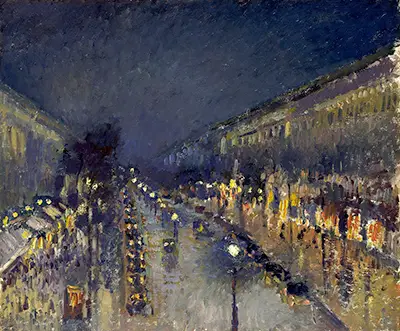Camille Pissarro's paintings were integral parts of the Impressionist movement and his role was highly respected by it's other members. There were several aspects to his style that were unique within this groundbreaking group and he was known to have influenced the likes of Monet, Cezanne and Degas.
This was an artist respected for his depictions of 'normal' people, going about their own lives. He did not amend their natural behaviour to better suit his presentation but spoke directly from reality. This was unusual at the time, though there are examples of it in previous centuries, such as with the work of Pieter Bruegel who produced expansive scenes of peasant life through his career. One will also recall the first famous painting of Vincent van Gogh, namely the Potato Eaters. Whilst some treated Pissarro as an outsider because of his lack of French nationality, he would find an inclusive community within the Impressionist movement which also welcomed several notable female painters (such as Cassatt and Morisot), again, unusual for the time.
Much earlier in his career Pissarro had spent time in the company of other young artists like Claude Monet, Armand Guillaumin and Paul Cézanne. They all felt unhappy with the direction of artistic teaching at their school and immediately shared a common ground in seeking a new way in which their own ideas would flourish rather than being stunted as at present. Pissarro was an integral part of this change, indeed even Paul Cezanne later described him as a pupil to Camille - what praise indeed! Although art historians have raised some of his colleagues' work to levels above those of Pissarro, his role in the Impressionist movement has never been forgotten nor undervalued.
In terms of his paintings of ordinary lives, works that immediately spring to mind include Hay Harvest at Éragny, Two Young Peasant Women, Garden at Éragny and The Harvest, Pontoise. Considering the hundreds of paintings that he produced across his prolific career, it is unsurprising that there are also many other related artworks which capture a similar content of the lives of normal people in the French countryside. Despite all this, Pissarro remains most famous for his cityscapes, particularly of the Montmartre Boulevard. One particular viewpoint was used on multiple occasions to study the changing light and seasonal conditions on the same Parisian street.
The overall influence of Pissarro was felt within both Impressionism and Post-Impressionism. He rejected the critics of the powerful Salon in order to produce work which was without the unrealistic components that they had demanded. Some of this was as a result of his earlier studies of the work of Gustave Courbet and Jean-Baptiste-Camille Corot who had a similar approach. Further involvement with pointilist artists like Georges Seurat and Paul Signac also helped to push things on further after the achievements of the Impressionists had been felt.























 Camille Pissarro.jpg)



